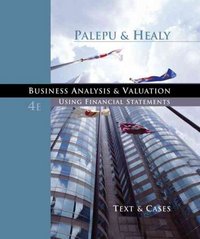QUESTION 1 ANSWER ALL PARTS The following Ordinary Least Squares (OLS) regression model has been produced to calculate the loss given default on an instrument for corporate firms. Model A: Constant 0.196 |_DEF 0.029 0.014 LGD_A 0.506 0.155 Leverage GDP growth 0.183 -0.156 0.068 0.062 Coefficient Standard error of the coefficient p-value 0.104 0.00 0.00 0.00 0.12 0.00 Where: I_DEF is the default rate observed in the previous year LGD_A is the average LGD of instruments with the same type as the firm Leverage is given by Total Debt / Total Assets GDP growth is the most recent economic growth figures The R for this model is 68% and the Root Mean Squared Errors (RMSE) is 0.279. The insignificant Leverage factories removed from Model A and the following logit model is produced. Model B: Constant LGD_A 0.192 1_DEF 0.032 0.018 0.529 Tangibility GDP growth -0.171 -0.156 0.098 0.062 0.109 0.144 Coefficient Standard error of the coefficient p-value 0.00 0.00 0.00 0.00 0.00 Where: Tangibility is given by (property, plant, equipment)/Total assets. The R for this model is 73% and the Root Mean Squared Errors (RMSE) is 0.265. QUESTION 1 CONTINUED a. Explain the overall fit of the models and how well they predict loss given default. (30% question weight) b. Describe the impact of each factor on loss given default. Discuss the rationale for the inclusion of the different factors in the models and their expected relationship with loss given default. (50% question weight) C. Calculate the t-ratio for each factor in Model A and Model B. (20% question weight) QUESTION 1 ANSWER ALL PARTS The following Ordinary Least Squares (OLS) regression model has been produced to calculate the loss given default on an instrument for corporate firms. Model A: Constant 0.196 |_DEF 0.029 0.014 LGD_A 0.506 0.155 Leverage GDP growth 0.183 -0.156 0.068 0.062 Coefficient Standard error of the coefficient p-value 0.104 0.00 0.00 0.00 0.12 0.00 Where: I_DEF is the default rate observed in the previous year LGD_A is the average LGD of instruments with the same type as the firm Leverage is given by Total Debt / Total Assets GDP growth is the most recent economic growth figures The R for this model is 68% and the Root Mean Squared Errors (RMSE) is 0.279. The insignificant Leverage factories removed from Model A and the following logit model is produced. Model B: Constant LGD_A 0.192 1_DEF 0.032 0.018 0.529 Tangibility GDP growth -0.171 -0.156 0.098 0.062 0.109 0.144 Coefficient Standard error of the coefficient p-value 0.00 0.00 0.00 0.00 0.00 Where: Tangibility is given by (property, plant, equipment)/Total assets. The R for this model is 73% and the Root Mean Squared Errors (RMSE) is 0.265. QUESTION 1 CONTINUED a. Explain the overall fit of the models and how well they predict loss given default. (30% question weight) b. Describe the impact of each factor on loss given default. Discuss the rationale for the inclusion of the different factors in the models and their expected relationship with loss given default. (50% question weight) C. Calculate the t-ratio for each factor in Model A and Model B. (20% question weight)









